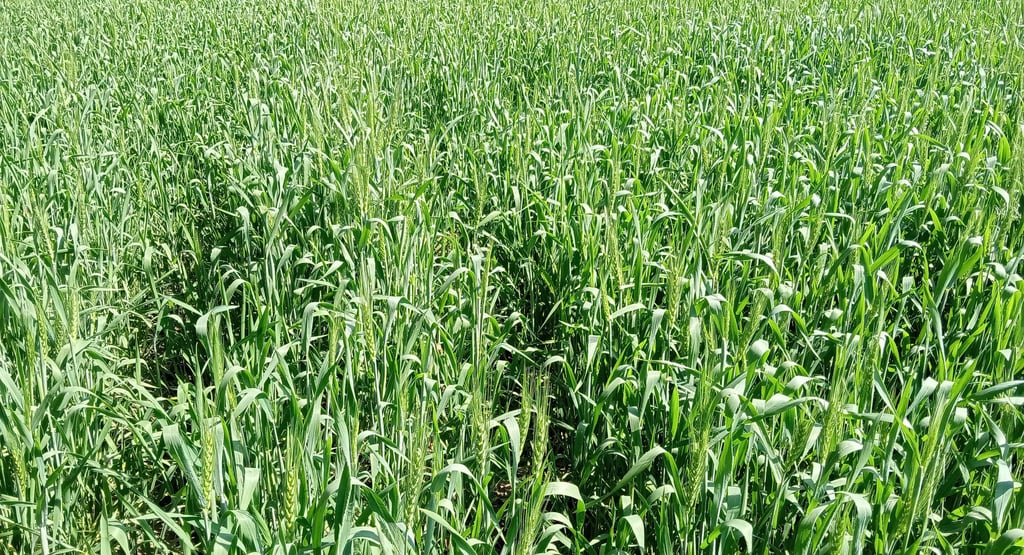Unlock discounts on eco-friendly solutions today!
Wheat Cultivation in North India: A Comprehensive Guide
Wheat is a staple crop in North India, playing a crucial role in food security and providing livelihoods to millions of farmers. The major wheat-growing states include Punjab, Haryana, Uttar Pradesh, Rajasthan, and Madhya Pradesh. The region's favorable climate, fertile soil, and irrigation facilities make it an ideal hub for wheat cultivation. Ideal Conditions for Wheat Cultivation Climate: Wheat is a rabi (winter) crop, sown between October and December and harvested from March to April. The ideal temperature for germination is 10-15°C, while 21-24°C is best for grain development. Soil: Loamy or clayey soil with good drainage is ideal. The soil should have a pH of 6.0-7.5 and be rich in organic matter. Rainfall & Irrigation: Wheat requires 50-100 cm of rainfall annually. Irrigation is essential during dry spells, particularly at crucial growth stages. Best Wheat Varieties for North India Choosing the right variety enhances yield and disease resistance. Some top varieties include: HD 2967, PBW 550, WH 1105 – High-yielding and disease-resistant varieties. DBW 187, UP 2338 – Suitable for different sowing conditions and climates. Lok 1, Sharbati Sonora – Preferred for their superior grain quality. Step-by-Step Wheat Cultivation Process 1. Land Preparation Deep plowing in summer helps break soil compaction and improves aeration. Field leveling ensures uniform water distribution. Application of organic manure enhances soil fertility and microbial activity. 2. Sowing Methods Line Sowing: Ensures better spacing and aeration, leading to healthier plants. Zero Tillage: Saves moisture and is beneficial for conservation farming. Broadcasting: Traditional method but less uniform in seed placement. 3. Nutrient Management with Dhara Greens Products To ensure healthy wheat growth, organic and balanced nutrition is essential. Dhara Greens offers sustainable solutions: NPK VARDHAK: A liquid bio-fertilizer that provides essential nitrogen, phosphorus, and potassium, enhancing soil fertility and crop productivity naturally. ZINC: An organic zinc supplement that improves root development, grain formation, and overall plant strength. These eco-friendly fertilizers help maintain soil health, increase yield, and reduce dependency on chemical fertilizers. Wheat requires irrigation at critical growth stages: Crown root initiation (20-25 days after sowing) Tillering stage (40-45 days) Jointing stage (60-65 days) Flowering stage (80-85 days) Milking stage (100-110 days) 5. Weed & Pest Management Weed Control: Use pre-emergence herbicides or manual weeding. Pest Management: Common wheat pests include aphids, termites, and armyworms. Organic pesticides from Dhara Greens offer effective pest control while ensuring crop safety. Disease Management: Opt for rust-resistant varieties and use organic fungicides to prevent powdery mildew and loose smut. 6. Harvesting & Post-Harvest Management Harvest when the grains harden and moisture content reduces to 12-15%. Proper threshing and winnowing help in obtaining high-quality grains. Store wheat in dry, ventilated conditions to prevent pest and fungal infestations. Promoting Organic Wheat Farming with Dhara Greens At Dhara Greens, we believe in sustainable and organic farming. Our products, NPK VARDHAK and ZINC, enrich the soil and promote plant health without harmful chemicals, ensuring a high-yield and eco-friendly wheat harvest. Switching to organic fertilizers and natural pest control methods not only enhances soil fertility but also protects consumer health and the environment. By adopting organic wheat farming practices, farmers can achieve better productivity, lower input costs, and sustainable agriculture. For expert guidance and premium organic farming solutions, connect with Dhara Greens today! 🌾
Noopur Dutta
2/10/20251 min read


A lush, golden wheat field flourishing under the sun, cultivated using Dhara Greens' organic bio-fertilizers—NPK VARDHAK and ZINC. The healthy, dense wheat plants stand tall, showcasing vibrant green leaves and well-formed grains, reflecting the benefits of sustainable and eco-friendly farming practices. 🌾
